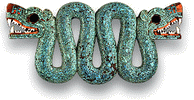Prehispanic objects were found in Zapopan (Jalisco)
Category: News reportsINAH, may 23, 2009. Almost a dozen Prehispanic objects were found during a hydraulic work excavation at Ciudad Granja, in Zapopan, Jalisco, in the Guadalajara vicinity. A pot, a vase and anthropomorphic figures are among the items discovered. Archaeologist Carlos Lopez Cruz, part of the Jalisco National Institute of Anthropology and History (INAH) Center, announced that an 80 by 100 centimeters probing well would be excavated in order to determine if there is a shaft tomb.
The ceramic types of the found objects (Tabachines and Arroyo Seco) correspond to Shaft Tombs Tradition, developed between 100 BC and 500 AD in the cultural region known as Western Mexico. The distinctive feature of this tradition is the presence the large shaft tombs.
Construction workers made the discovery in May 2009 while performing drain network maintenance work in Zapopan. It was notified immediately to the Jalisco INAH Center, and the zone was cordoned. Shaft tombs consist, according to the specialist, in a vertical shaft or tunnel of variable depth that lead to one or several mortuary chambers, of 3 by 2.5 meters, with a 1,5 meters height, approximately. “We suppose the tomb, if it exists, is in good conditions, since the hydraulic network ditches are never more than 1 meter wide; we pretend to find it and look for humans remains and offerings”, explained Carlos Lopez. The archaeological pieces found, approximately 1,500 years old, are under custody of the Jalisco INAH Center, and could become part of the Guadalajara Regional Museum after their restoration.
Shaft tombs have been found in this zone in Zapopan since 1970; they confirm the prolonged occupation of Atemajac Valley in Prehispanic times. “There are vestiges of human presence in Atemajac Valley, where Guadalajara, Tonala, Tlaquepaque and Zapopan municipalities are found, that go back to ages before Christ, represented by shaft tombs”. We have structures from the Techitlan Tradition dated between 200 and 400 AD, and other settlements after 500 AD, such as El Grillo, remarked the archaeologist.
“This valley is surrounded by hills and at some of their tops archaeological evidence has been found, dated near 1300 AD; this findings, as well as Ciudad Granja ones, helps us track and recognize the Prehispanic dwelling sequence that lies under the urban spot, concluded the archaeologist”.
Source: INAH.


